The Hudson River flowing next to the New York City skyline is the quintessential backdrop to most major film productions. The Hudson’s waterways directly shape the city, and it’s an iconic fixture in the lives of New Yorkers.

Millions of people visit this famous city and river every year, whether taking in the views or participating in water recreation. However, it gets a bad reputation, and locals generally understand that you shouldn’t get in the water. What lives at the bottom of the Hudson River, and is it hazardous to swim in it?
About the Hudson River
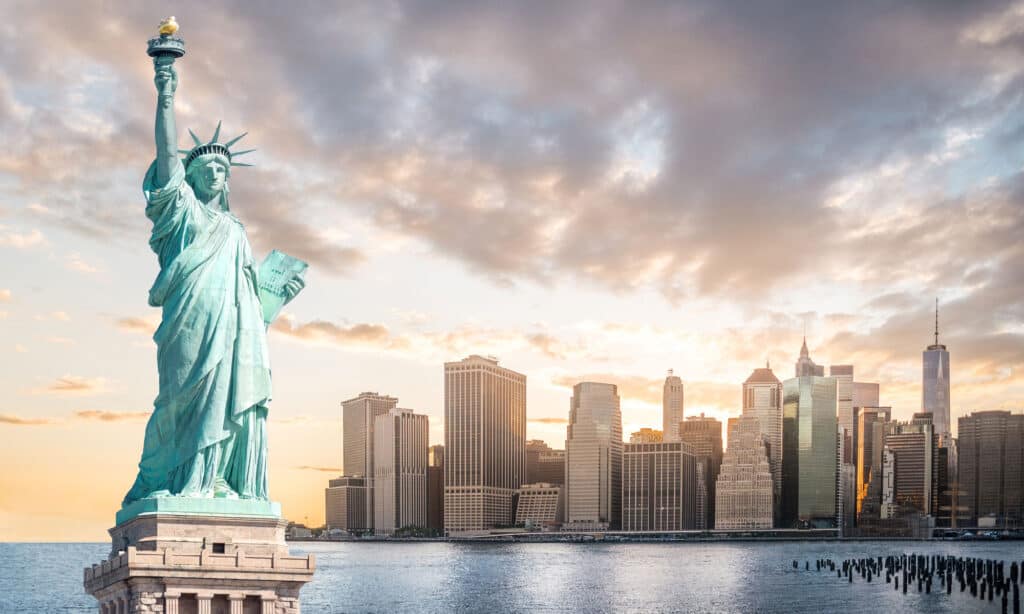
The Hudson River flows through New York and empties into the Atlantic Ocean.
©iStock.com/spyarm
The Hudson River flows north to south in Eastern New York. Its source comes from the Adirondack Mountains in Upstate, then flows south through the Hudson Valley, and eventually drains into the Atlantic Ocean at the New York Harbor.
Several Algonquians’ branches inhabited the Hudson River areas, and they lived in peace with each other. John Cabot, an Italian explorer, discovered this coastal area in 1497. Different countries claimed parts of the river for hundreds of years, giving it contrasting names. The name we use today was after an English navigator, Henry Hudson, who sailed his ship up the river in 1609. Since the beginning, the Hudson River has played a vital role in travel and trade for the world. Today, it brings people from all walks of life to view its splendor.
The Hudson River is unique because half its length is a tidal estuary, meaning it has salt and fresh water. It ebbs and flows with the ocean tide and supports a rich diversity of animal and plant life. Its water provides critical habitats for many key species.
Is the Hudson River Dangerous?
For 30 years (1947 to 1977), General Electric discharged PCBs (highly carcinogenic chemicals) into the Hudson, causing harmful effects to wildlife and the people who ingested fish from the river. Mercury and untreated sewage also pollute the water.
Efforts have been made to clean up the river, and while there are improvements, officials still warn of the dangers of swimming in polluted waters. PCBs cause extensive contamination and are responsible for an onslaught of health concerns. The government designated 200 miles of the Hudson as a superfund site in 1984.
What Lives at the Bottom of the Hudson River?

Barnacles, marsh grass, small fish, and crabs live at the bottom of the Hudson River.
©Ennie/Shutterstock.com
Crabs, small fish, barnacles, and salt-tolerant marsh grasses live at the bottom of the Hudson River. There is a wide range of river bottom habitats, from muddy and shallow to deep and sandy. These habitats are essential for creatures to spawn and feed at the bottom; some may even make their homes in ship wreckage.
The Hudson wraps around one of the largest cities in the world; it’s bound to have some interesting (and creepy) finds at the bottom. Here’s a look at everything found at the bottom of this river:
- 300 ships
- A freight train
- Dead bodies (homicides and suicides during the winter don’t float to the surface until the water warms)
- Stripped cars
- Random junk like tires, garbage cans, and broken bicycles
- A grand piano
- Giraffe remains (apparently, it fled the circus)
- A 350-foot steamship
- Human waste with pieces of toilet paper (overflowing sewage pipes release excrement-filled water into the harbor during a rainstorm)
- 1,600 silver bars worth 26 million dollars (Guggenheim Treasure)
- Ice cream trucks
- Remnants of an old Coney Island theme park
Most Unusual Creatures in the Hudson River
Atlantic Sturgeon
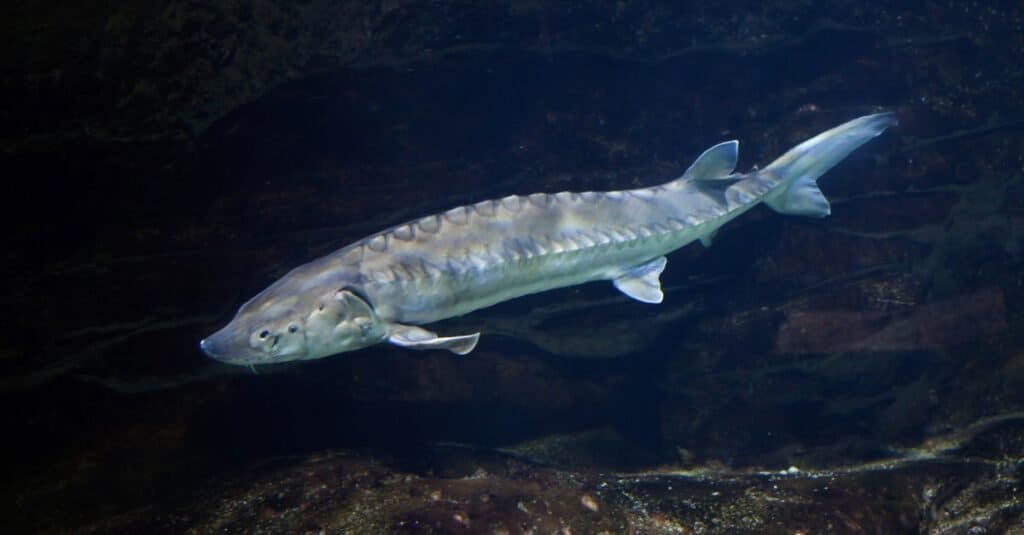
Sturgeon are rare in the Hudson River and are prized for their high-quality caviar.
©Vladimir Wrangel/Shutterstock.com
The sturgeons, one of the oldest fish families in existence, were once plentiful on the east coast. They became prized for their eggs, which produced high-quality caviar. By the early 1900s, their population had dwindled drastically. Today, it’s rare to find an Atlantic sturgeon swimming through the Hudson River. These ancient fish are pretty striking in their size, growing up to 16 feet long and 800 pounds.
Round Goby
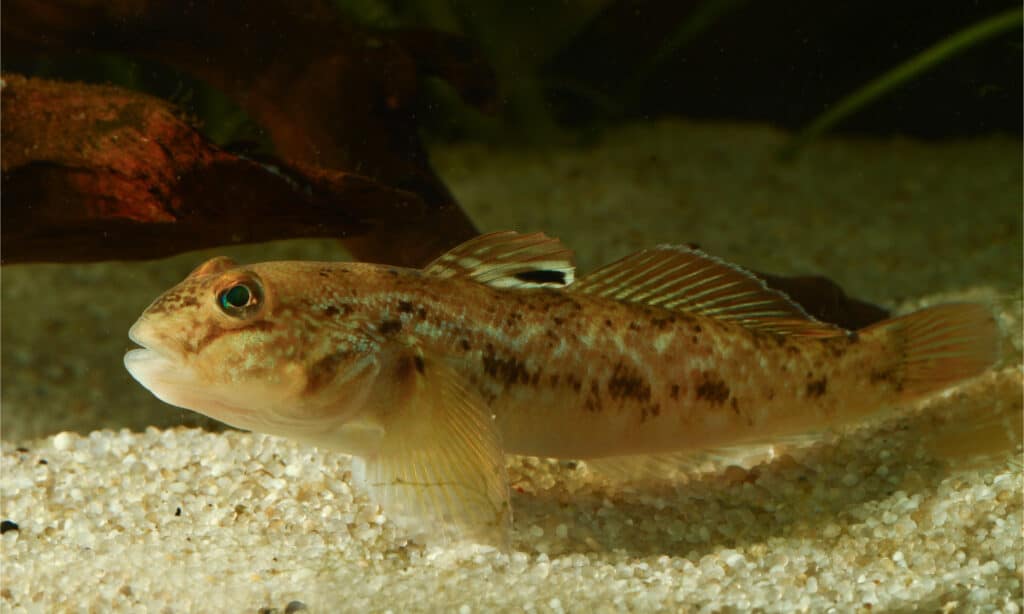
The round goby is an invasive species and wreaks havoc on fragile ecosystems.
©Geza Farkas/Shutterstock.com
Some consider round gobies a threat worse than pollution, and they are now in the Hudson River. This invasive species is excellent at adapting to most environments and wreaking havoc on fragile ecosystems. They are only 10 inches long, but their size is not what’s concerning. The round goby is a prolific breeder and a voracious eater that can significantly decrease already declining populations.
Water Nymph
The water nymph is an aquatic plant endemic to the Hudson River; it is found nowhere else on earth. It is an extremely rare plant and typically only resides on the southern part of the river. It was once abundant throughout the waterways, but now you may only come across it during low tide or stranded on the tidal mudflats.
Glass Eel
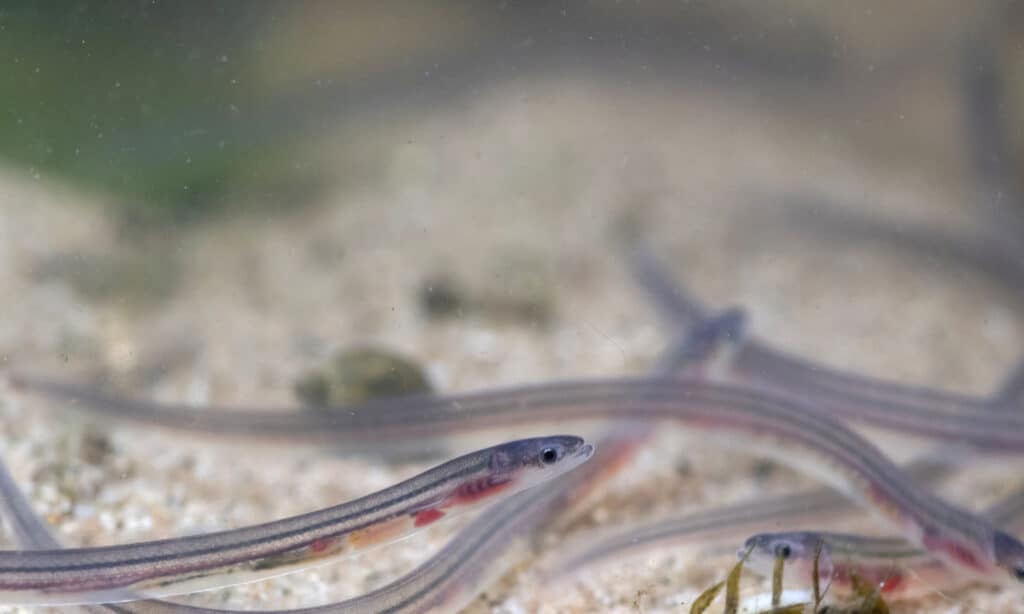
Glass eels gain their pigment and stay in the river for years.
©jack perks/Shutterstock.com
American eels are born in the Atlantic Ocean and migrate to the Hudson River as tiny, translucent “glass eels” each spring. Soon after they arrive, they gain their pigment and stay in the river for years. American eels are located throughout the Hudson and can live in fresh and salt water. You may even see one slithering like a snake on land when it’s damp. These creatures are adaptable and very tolerant of pollution.
Humpback Whale
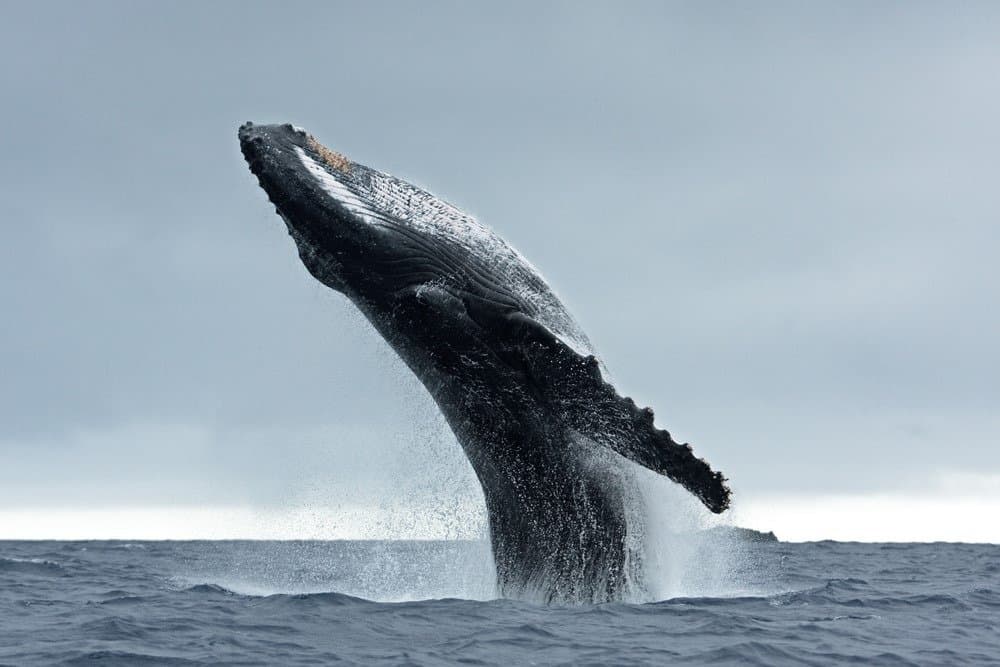
Humpback whales are making more frequent appearances in the Hudson River after clean-up efforts.
©Martin Prochazkacz/Shutterstock.com
A whale sighting in the Hudson doesn’t happen often, but when it does, it’s magical. New Yorkers get to whale watch every couple of years as these majestic creatures breach the surface and spray water. They only stay for a short while before moving for deeper water south of the Hudson. Humpback whales are unique for their song-like communication. Researchers have even viewed calves whispering to their mothers.
Interesting Facts
- Henry Hudson, the English sea explorer the river was named after, was abandoned at sea and never heard from again.
- Geologists consider the Hudson to be a flooded fjord, which is more common further north.
- The famous actor Harrison Ford used to fly his private aircraft over the Hudson to look for polluters.
- Fish in the heavily polluted water evolved to withstand the harsh, toxic chemicals.
- In January 2009, flight 1549 hit a flock of birds and lost engine power. The captain safely landed the plane on the Hudson River without a single casualty (150 people were on board).
- A 1934 plan to dam and fill the Hudson River would have effectively added ten square miles to Manhattan.
- Oyster shell heaps in the Hudson River carbon date human existence in the valley back to 5000 BC.
The photo featured at the top of this post is © Songquan Deng/Shutterstock.com
Thank you for reading! Have some feedback for us? Contact the AZ Animals editorial team.







